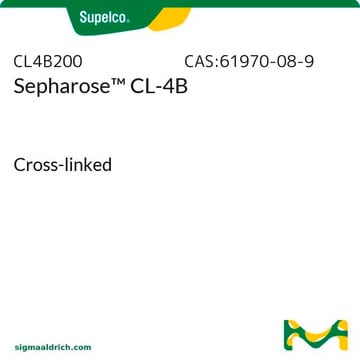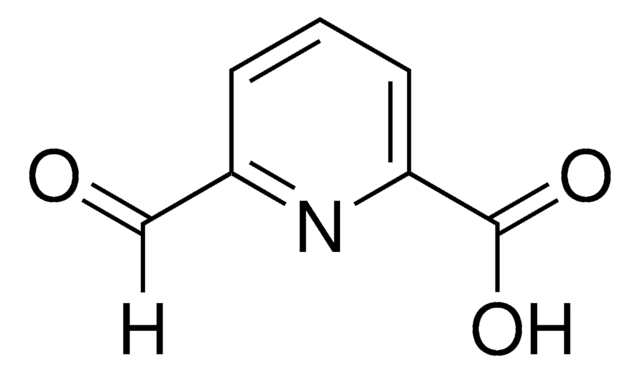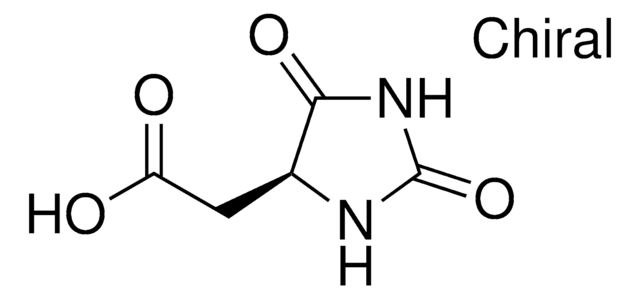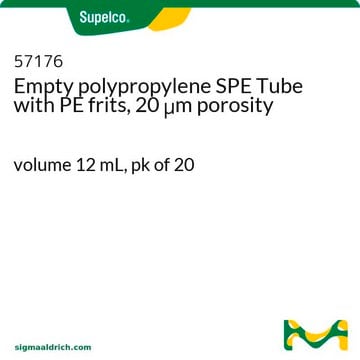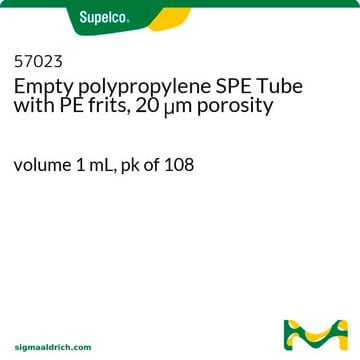CL2B300
Sepharose™ CL-2B Size Exclusion Resin
Cross-linked, 70-230 mesh
About This Item
Polecane produkty
product name
Sepharose™ CL-2B, Cross-linked
Postać
suspension
średnica granulek
60-200 μm
wielkość porów
100,000-20,000,000 fractionation range (Dextrans)
70,000-40,000,000 fractionation range (Globular proteins)
temp. przechowywania
2-8°C
Szukasz podobnych produktów? Odwiedź Przewodnik dotyczący porównywania produktów
Powiązane kategorie
Opis ogólny
Zastosowanie
- gel permeation chromatography (GPC)
- gravity chromatography
- streptavidin affinity chromatography
- size exclusion chromatography
Informacje prawne
zastąpiony przez
Hasło ostrzegawcze
Warning
Zwroty wskazujące rodzaj zagrożenia
Zwroty wskazujące środki ostrożności
Klasyfikacja zagrożeń
Flam. Liq. 3
Kod klasy składowania
3 - Flammable liquids
Klasa zagrożenia wodnego (WGK)
WGK 1
Temperatura zapłonu (°F)
102.2 °F - closed cup
Temperatura zapłonu (°C)
39 °C - closed cup
Certyfikaty analizy (CoA)
Poszukaj Certyfikaty analizy (CoA), wpisując numer partii/serii produktów. Numery serii i partii można znaleźć na etykiecie produktu po słowach „seria” lub „partia”.
Masz już ten produkt?
Dokumenty związane z niedawno zakupionymi produktami zostały zamieszczone w Bibliotece dokumentów.
Klienci oglądali również te produkty
Nasz zespół naukowców ma doświadczenie we wszystkich obszarach badań, w tym w naukach przyrodniczych, materiałoznawstwie, syntezie chemicznej, chromatografii, analityce i wielu innych dziedzinach.
Skontaktuj się z zespołem ds. pomocy technicznej
